Bamboo Around the World: A Pillar of Culture and Tradition
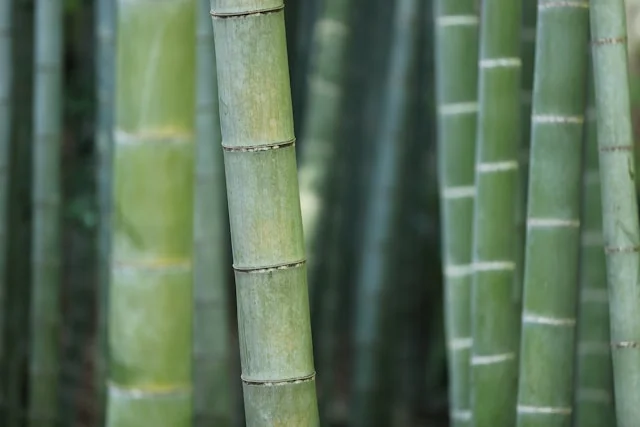
Bamboo, a versatile and fast-growing grass, is more than just a plant. It’s a symbol of resilience, adaptability, and has woven itself into the cultural fabric of societies across the globe for millennia. From towering scaffolding in Southeast Asia to delicate flutes in Japan, bamboo’s presence is undeniable. Let’s embark on a journey to explore the cultural significance and traditional uses of bamboo around the world. Asia: The Enduring Embrace of Bamboo China: A Legacy of Sustainability China boasts a rich history of bamboo utilization, evident in ancient texts dating back to the 4th millennium BCE. Here, bamboo is not just a material, it’s a way of life. [Bamboo as a valuable resource and its utilization in historical and modern-day China] Construction, furniture, tools, utensils, and even traditional medicine all rely on bamboo. The iconic scaffolding used in China’s historic building projects exemplifies bamboo’s strength and versatility. Japan: Finding Harmony with Nature In Japan, bamboo embodies the essence of wabi-sabi, the appreciation of imperfection and impermanence. Bamboo’s natural beauty and flexibility are celebrated in various art forms like ikebana (flower arrangement) and basket weaving. The soothing sounds of the shakuhachi flute, crafted from bamboo, resonate with Japanese culture. [From ancient times to modern day: exploring the many uses of bamboo in our daily lives] India: A Deeply Rooted Tradition India’s connection with bamboo stretches back to the Vedic age. [Socio -cultural and Management Significance of Bamboos in Indian heritage and tradition] It features prominently in ancient texts and is used for construction, utensils, musical instruments like the bansuri, and even religious ceremonies. Certain communities revere bamboo groves, attributing them with spiritual significance. Beyond Asia: A Global Embrace Africa: A Source of Strength and Sustenance Africa has a long-standing tradition of using bamboo for construction, furniture, and tools. In some regions, bamboo shoots are a valuable food source. The intricate weaving techniques employed by African artisans create beautiful and functional baskets, mats, and other items. South America: A Symbol of Unity and Diversity In South America, bamboo plays a vital role in the lives of indigenous communities. It’s used for building houses, crafting weapons, and creating musical instruments like panpipes. The Yanomami people of the Amazon rainforest even use bamboo to construct elaborate communal structures. Beyond Borders: A Unifying Material Bamboo transcends cultural boundaries. Its rapid growth and eco-friendly nature make it a sustainable alternative to traditional materials. The global bamboo industry is flourishing, with applications ranging from clothing and flooring to bicycles and even high-rise buildings. Cultural Significance: More Than Just Utility Symbolism and Mythology Bamboo features prominently in various cultures’ myths and legends. In China, it symbolizes longevity and resilience. Japanese folklore associates bamboo with strength and flexibility. Across Southeast Asia, bamboo shoots represent new beginnings and prosperity. Religious and Spiritual Connections Many cultures hold bamboo in high religious regard. In Hinduism, bamboo represents purity and is used in rituals. Certain Buddhist temples in Southeast Asia are constructed entirely from bamboo. In some indigenous communities, bamboo groves are considered sacred spaces. Art and Music: A Canvas for Creativity The natural beauty and versatility of bamboo make it a favorite material for artisans. Asian cultures have a rich tradition of bamboo art, from intricate basket weaving to delicate paintings on bamboo strips. The mellow tones of bamboo flutes resonate in music traditions across the globe. The Future of Bamboo: Sustainable Solutions As the world grapples with environmental challenges, bamboo emerges as a beacon of hope. Its rapid growth and ability to regenerate make it a highly sustainable resource. The bamboo industry is constantly innovating, with new applications being developed all the time. Environmental Benefits Bamboo forests play a crucial role in soil conservation and preventing erosion. They also act as carbon sinks, helping to mitigate climate change. The growing awareness of bamboo’s sustainability has led to a surge in its use for eco-friendly products. Economic Opportunities The bamboo industry presents a significant economic opportunity, particularly for developing nations. Bamboo cultivation can create jobs, generate income for rural communities, and promote sustainable development. A Material for a Greener Future Bamboo’s cultural significance, traditional uses, and sustainable properties make it a valuable resource for the future. By harnessing its potential, we can create a more harmonious relationship with the environment and build a more sustainable future. Conclusion Bamboo is more than just a plant; it’s a cultural touchstone woven into the fabric of societies worldwide. From the towering structures of China to the delicate melodies of Japanese flutes, bamboo’s presence transcends borders and speaks to the ingenuity and adaptability of humankind. As we navigate the challenges of the 21st century, bamboo emerges as a beacon of hope. Its rapid growth, versatility, and environmentally friendly nature make it a critical player in building a more sustainable future. By embracing bamboo’s cultural significance, traditional uses, and innovative potential, we can create a world where human ingenuity thrives in harmony with the environment. Let’s continue to learn from the wisdom of past generations and explore the boundless possibilities this remarkable plant offers. After all, the future of bamboo is not just about utility – it’s about fostering a deeper connection with nature and building a more resilient tomorrow.
Bamboo Furniture: Stylish, Functional, and Environmentally Friendly
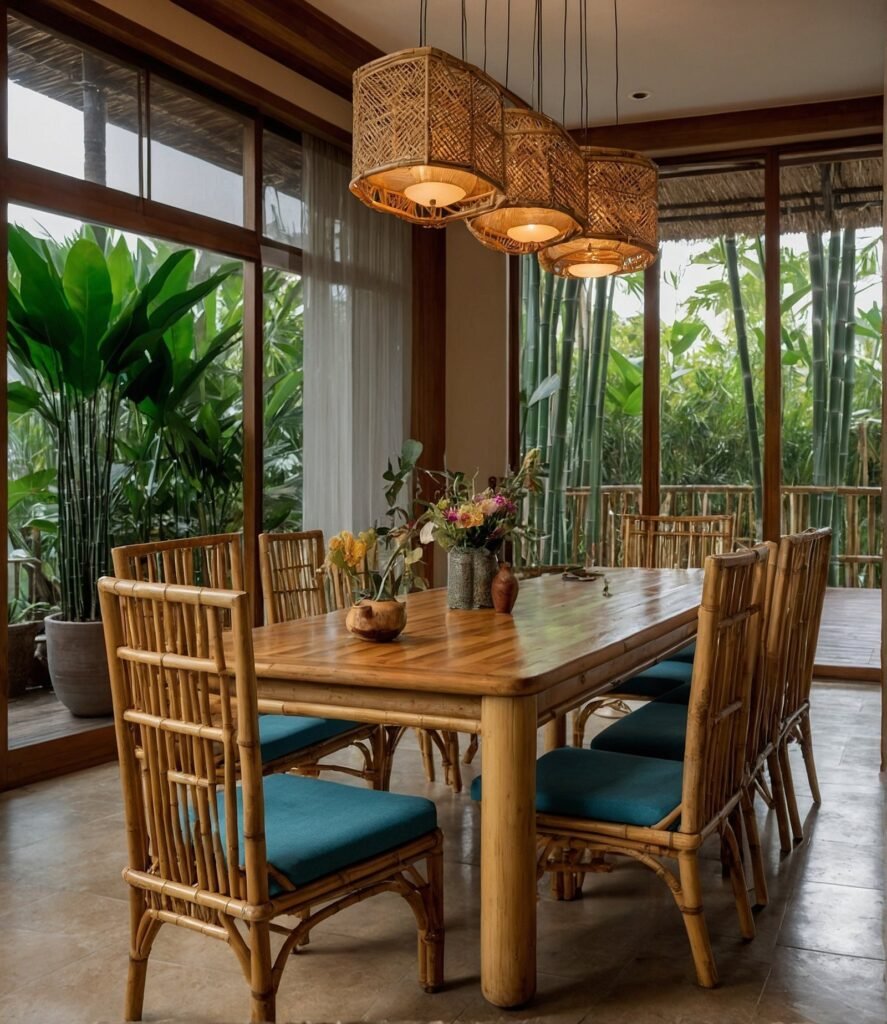
In today’s world, where sustainability has become a pivotal concern, eco-conscious consumers are seeking alternatives to traditional furniture materials. Among these alternatives, bamboo has emerged as a frontrunner, heralding a new era of eco-chic design in modern interiors. Let’s delve into the transformative impact of sustainable bamboo furniture on contemporary interior design. The Sustainability of Bamboo Bamboo, often touted as the world’s most renewable resource, holds remarkable eco-friendly credentials. Unlike hardwood trees that take decades to mature, bamboo is a rapidly renewable grass that can be harvested in as little as three to five years. Its quick growth rate and ability to thrive without the need for pesticides or fertilizers make it inherently sustainable. Moreover, bamboo’s extensive root system helps prevent soil erosion and contributes to carbon sequestration, making it a vital ally in the fight against climate change1. Versatility in Design One of the most compelling aspects of bamboo furniture is its versatility in design. From sleek and modern to rustic and traditional, bamboo can be crafted into an array of styles to suit diverse aesthetic preferences. Whether it’s a minimalist bamboo coffee table, an intricately woven bamboo chair, or a statement bamboo shelving unit, the design possibilities are virtually endless. Furthermore, bamboo’s natural grain and warm tones add a touch of organic beauty to any interior space, creating a harmonious blend of style and sustainability. Durability and Strength Contrary to common misconceptions, bamboo furniture is not only sustainable but also exceptionally durable. Thanks to its natural strength and resilience, bamboo furniture rivals traditional hardwoods in terms of longevity and performance. When properly treated and finished, bamboo furniture exhibits impressive resistance to warping, cracking, and moisture damage, making it an ideal choice for high-traffic areas such as living rooms, dining rooms, and even outdoor patios. As a result, investing in bamboo furniture is not only an eco-conscious choice but also a practical one that promises years of use and enjoyment. Environmental Benefits Beyond its sustainability and aesthetic appeal, bamboo furniture offers a host of environmental benefits that further underscore its eco-chic status. As a fast-growing plant, bamboo requires minimal water and energy inputs compared to conventional wood species, reducing the ecological footprint of furniture production. Additionally, bamboo forests play a crucial role in biodiversity conservation, providing habitat for a wide range of plant and animal species1. Creating an Eco-Friendly Future with Bamboo The rise of sustainable bamboo furniture marks an exciting shift in the world of interior design, where style and sustainability converge to create spaces that are both aesthetically pleasing and environmentally responsible.
Bamboo Innovations: Discovering New Technologies and Applications for a Sustainable Future
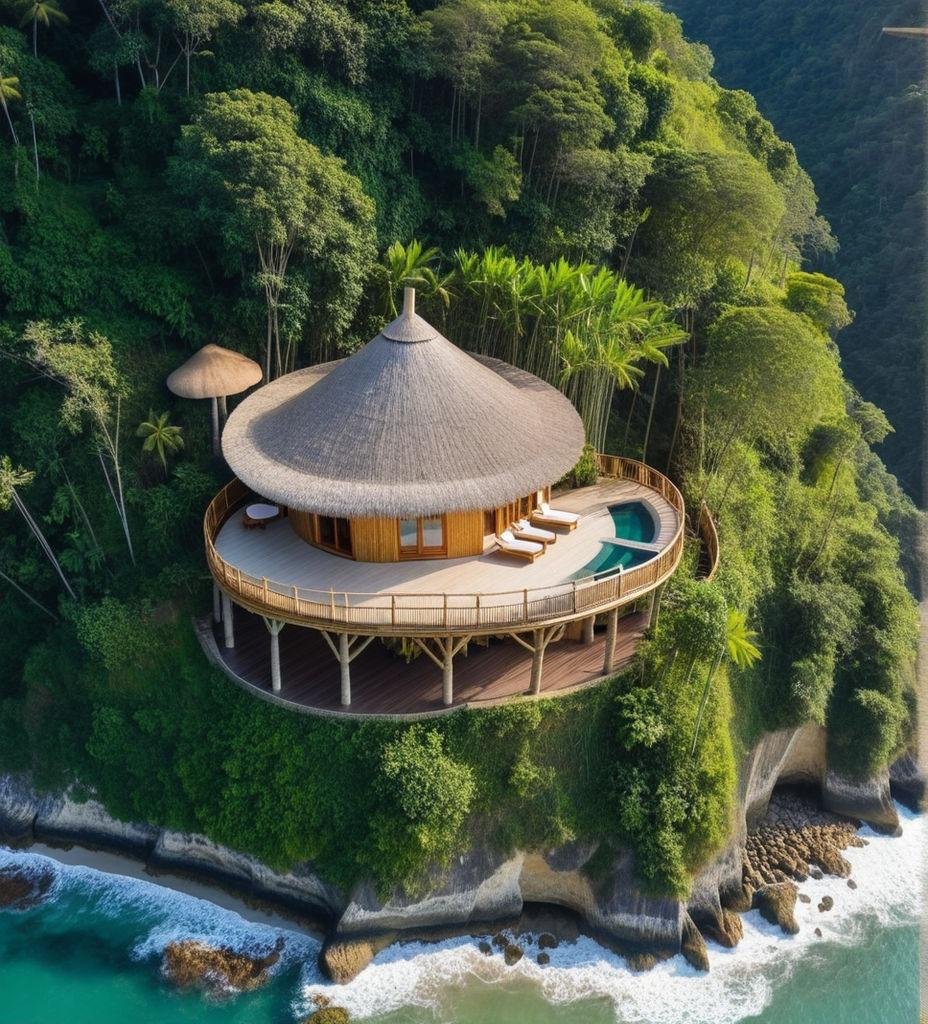
Bamboo, a fast-growing and versatile giant grass, has been a cornerstone of human civilization for millennia. From humble beginnings in construction and tools, bamboo’s potential is exploding thanks to cutting-edge technologies. This surge in innovation is unlocking a new era of sustainable applications, making bamboo a key player in building a greener future. Why Bamboo? A Sustainable Powerhouse Bamboo’s unique properties make it an ideal candidate for sustainable innovation: Bamboo Innovations: A Glimpse into the Future Let’s delve into some of the exciting technological advancements pushing the boundaries of bamboo’s capabilities: Beyond the Obvious: Unveiling Unexpected Applications The world of bamboo innovation extends far beyond construction and textiles. Here are some groundbreaking applications on the horizon: The Road Ahead: Challenges and Opportunities Despite the exciting advancements, there are challenges to overcome: Embracing a Greener Future with Bamboo The potential of bamboo innovation is undeniable. By overcoming challenges and fostering collaboration between researchers, engineers, and entrepreneurs, we can unlock a future where bamboo plays a vital role in sustainable development. From building eco-friendly homes to creating innovative bio-products, bamboo offers a pathway to a greener future.
Bamboo Farming: A Promising Industry for Sustainable Agriculture

Discover the potential of bamboo farming – a sustainable solution for agriculture. With its rapid growth, versatility, and environmental benefits, bamboo offers a promising opportunity for farmers and industries alike. Explore how bamboo cultivation can drive economic growth while promoting ecological balance.
The Environmental Impact of Bamboo: How Choosing Bamboo Products Helps Combat Climate Change

Bamboo is emerging as a powerful ally in the fight against climate change, thanks to its rapid growth, carbon sequestration abilities, and minimal environmental impact. From flooring and textiles to paper and kitchenware, bamboo products offer sustainable alternatives to traditional materials, reducing deforestation and pollution. However, responsible harvesting and eco-friendly manufacturing are crucial to maximize its benefits. By choosing bamboo, consumers can significantly lower their carbon footprint and support a greener future. Discover how this versatile plant can play a pivotal role in creating a more sustainable world.
Bamboo: A Renewable Resource for Sustainable Living
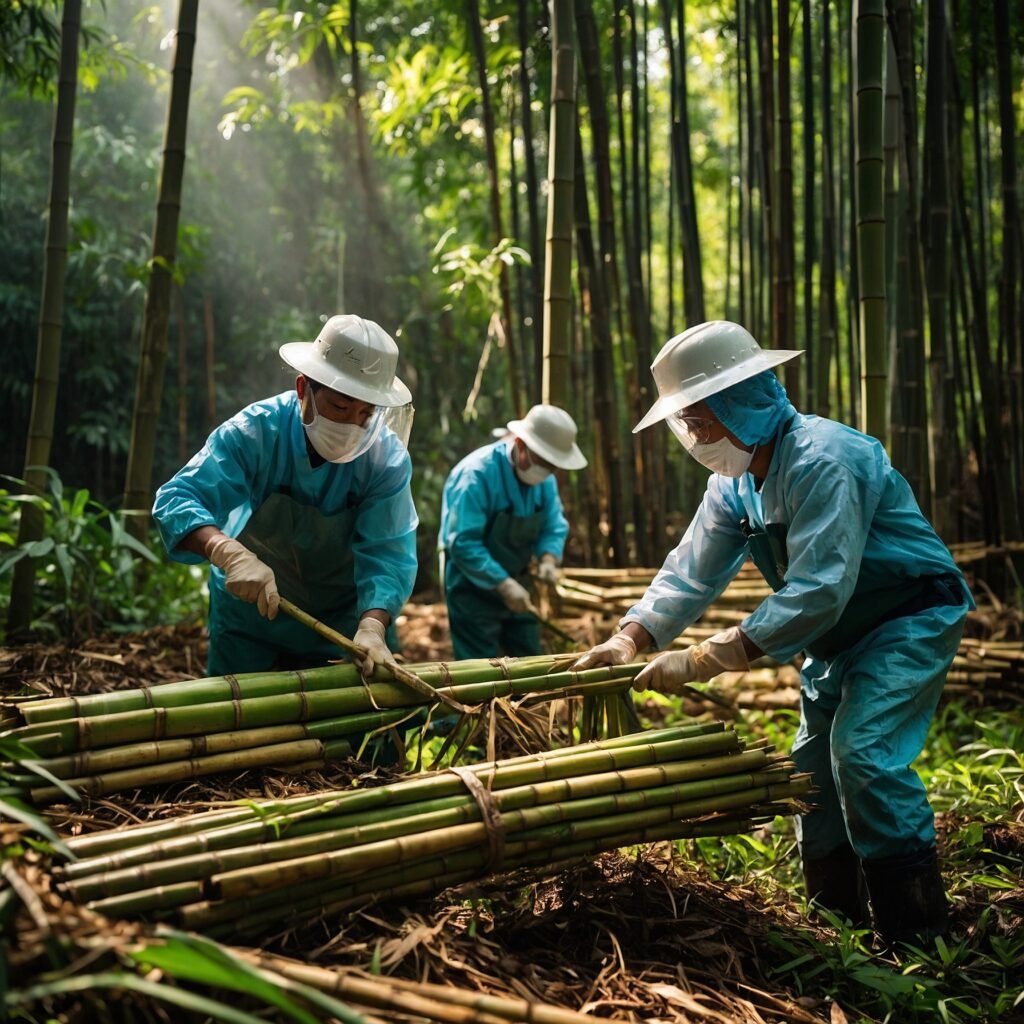
Bamboo, a fast-growing and eco-friendly plant, offers numerous environmental benefits like carbon sequestration, soil erosion control, and water conservation. Its versatility makes it ideal for sustainable living, with applications in construction, furniture, textiles, and kitchenware. Bamboo supports biodiversity, enhances sustainable agriculture, and provides renewable energy.
Exploring the Beauty of Bamboo Villas: Design Inspirations and Architectural Wonders
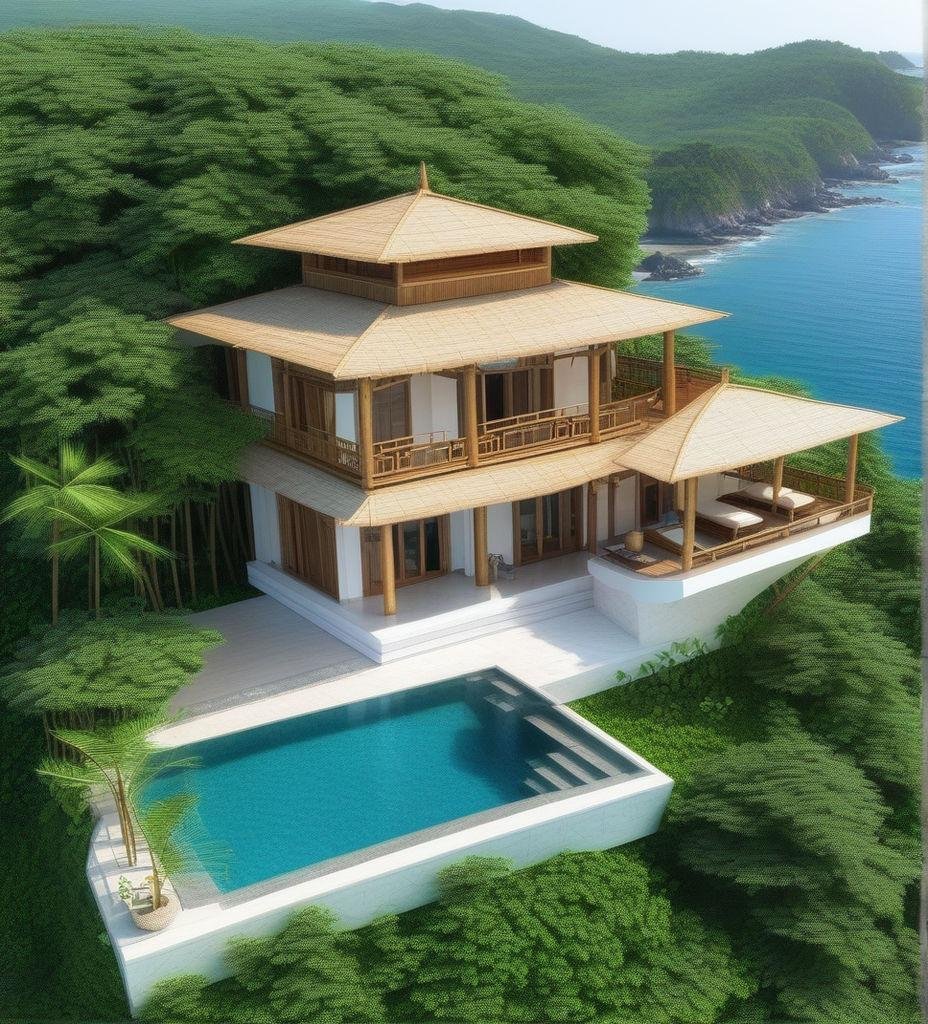
Bamboo, a symbol of strength and resilience, has been a vital part of construction and design for centuries, especially in Asian cultures. The unique combination of its aesthetic appeal and environmental sustainability has made it a favorite among architects and designers around the globe. One of the most remarkable applications of this versatile material is in the construction of bamboo villas. These structures are not only architectural marvels but also represent a harmonious blend of nature and modern living. In this article, we will delve into the beauty of bamboo villas, exploring design inspirations and architectural wonders that make them stand out. The Appeal of Bamboo in Architecture 1. Sustainability and Eco-Friendliness Bamboo is one of the fastest-growing plants in the world, making it a highly renewable resource. It can grow up to three feet in a day and reaches maturity in three to five years, compared to traditional hardwoods that can take decades to mature. This rapid growth rate means that bamboo forests can be harvested sustainably without causing deforestation. Moreover, bamboo releases 35% more oxygen into the atmosphere than an equivalent stand of trees, contributing positively to the environment. 2. Strength and Durability Despite its lightweight nature, bamboo is incredibly strong. It has a higher tensile strength than many types of steel, making it an excellent material for construction. Its flexibility allows it to withstand natural calamities such as earthquakes and strong winds, which is why it has been used in regions prone to such events. When treated properly, bamboo can also resist pests and rot, ensuring the longevity of the structures. 3. Aesthetic Versatility Bamboo’s natural look brings a touch of elegance and tranquility to any space. Its texture and color can be incorporated into various design styles, from rustic to contemporary. The versatility of bamboo allows for creative freedom in architectural design, enabling architects to create unique and visually stunning structures. Design Inspirations from Bamboo Villas 1. Traditional Meets Modern One of the most inspiring aspects of bamboo villas is the seamless integration of traditional design elements with modern architecture. Many bamboo villas incorporate traditional thatched roofs and open floor plans that promote natural ventilation and lighting. These elements are combined with modern amenities and sleek designs to create a perfect blend of old and new. 2. Open-Air Living Bamboo villas often feature open-air living spaces that allow residents to connect with nature. Large verandas, open kitchens, and expansive living areas are common, providing a sense of freedom and relaxation. This design not only enhances the aesthetic appeal but also promotes sustainability by reducing the need for artificial lighting and air conditioning. 3. Organic Shapes and Curves Bamboo’s flexibility allows architects to experiment with organic shapes and curves that are difficult to achieve with conventional building materials. Many bamboo villas boast stunning curved roofs, spiral staircases, and flowing lines that mimic the natural environment. These organic shapes create a harmonious balance between the built environment and nature, enhancing the overall appeal of the villas. 4. Eco-Friendly Interiors The use of bamboo is not limited to the structure of the villa; it extends to the interiors as well. Bamboo furniture, flooring, and decorative elements are popular choices for creating a cohesive and eco-friendly design. The natural texture and color of bamboo add warmth and character to the interiors, making the living spaces inviting and comfortable. Architectural Wonders: Notable Bamboo Villas Around the World 1. Green Village, Bali, Indonesia Green Village in Bali is a prime example of how bamboo can be used to create luxurious and sustainable living spaces. Designed by Ibuku, a Bali-based architecture firm, the village consists of several bamboo villas set along the Ayung River. Each villa is uniquely designed, showcasing the versatility and beauty of bamboo. The structures feature open-air living spaces, intricate bamboo craftsmanship, and eco-friendly amenities, making them a perfect blend of luxury and sustainability. 2. The Six Senses Con Dao, Vietnam The Six Senses Con Dao is a luxury resort in Vietnam that features stunning bamboo villas. The resort’s design emphasizes sustainability and harmony with nature, using locally sourced bamboo and other natural materials. The villas offer breathtaking views of the ocean and surrounding landscape, with open-air living spaces and eco-friendly interiors. The resort’s commitment to sustainability extends to its operations, making it a model for eco-friendly luxury. 3. The Alila Villas Uluwatu, Bali, Indonesia Located on a clifftop overlooking the Indian Ocean, the Alila Villas Uluwatu in Bali are a testament to the beauty and versatility of bamboo. Designed by Singapore-based WOHA Architects, the villas feature open-plan living spaces, bamboo screens, and eco-friendly materials. The design emphasizes sustainability and harmony with the natural environment, creating a serene and luxurious retreat. 4. Bamboo House, Costa Rica The Bamboo House in Costa Rica is an architectural marvel that showcases the potential of bamboo in sustainable design. Designed by Benjamin Garcia Saxe, the house features an open-plan layout, large windows, and bamboo interiors. The structure is elevated on stilts to minimize its impact on the landscape, and the use of bamboo and other natural materials creates a harmonious connection with the surrounding environment. 5. The Green School, Bali, Indonesia While not a villa, the Green School in Bali deserves mention for its innovative use of bamboo in architecture. Designed by John Hardy, the school is built entirely from bamboo and other sustainable materials. The open-air classrooms, bamboo bridges, and organic shapes create a unique and inspiring learning environment. The Green School is a testament to the potential of bamboo in creating sustainable and beautiful structures. The Future of Bamboo Architecture 1. Innovations in Bamboo Treatment and Construction Advancements in bamboo treatment and construction techniques are expanding the possibilities for bamboo architecture. New methods of treating bamboo to enhance its durability and resistance to pests are being developed, making it an even more viable option for construction. Additionally, innovative construction techniques such as prefabrication and modular design are making it easier and more cost-effective to build with bamboo. 2. Integration with Modern
